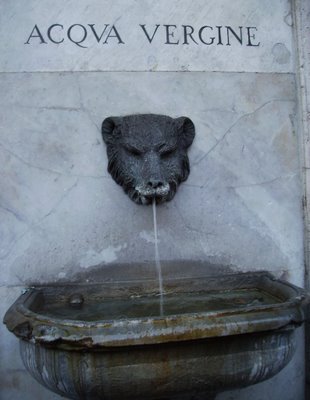084 libri nuovi

(above: Bernini's famous colonade at Pza. San Pietro)
For my Italian language studies, I brought 4 books with me on the trip:
1. dictionary
2. verb conjugation book
3. "Italian For Beginners"
4. "Italian Grammar"
"Italian for Beginners" is a little white book geared toward tourists, and a fun approach to learning language. You learn little spots of vocabulary ("at the beach", "in the railway station", "at the hotel", etc), and almost everything is in present tense. "Italian Grammar" is a big green book, geared toward university students, and is a rigorous approach to learning the language. Unlike the little white book, which teaches you the main idea (i.e. "il" is masculine and "la" is feminine), this book gives you all of the rules and exceptions in one monumental scholastic dose (il, lo, l', la, le, i, gli).
I had intended to work through the big green book, and I made it through the 1st 3 chapters or so, when I opened the little white book and promptly changed plans. So, I'm happy to report today that I'm actually almost completely done with the little white book (3 chapters left of about 27).
Although my intent was to go back to the green book, I recently gave in to the temptation to visit a bookstore and now I have a new study plan............
I bought 2 books in Italian!
1. Angeli e Demoni, Dan Brown
2. La Testa degli Italiani, Beppe Severgnini
The first one I bought because (1) I have read it in English, so I don't have to worry about missing out on the plot due to language difficulties, and (2) it describes many of Rome's buildings and sculptures in detail.
I bought the second one because (1) this is probably the only contemporary Italian author that I know by name, AND I have already read one of his books, and (2) literally translated as "The Minds of the Italians", the book describes the author's 10 day trek through Italy with foreigners, discussing what makes the Italian people tick, and (3) it was on sale, 5 euros in hardback.
And I couldn't be happier that my reading comprehension level is much higher than I had thought. I can understand the books without using the dictionary when I'm lazy and want to relax, and when I want a more academic effort, I can look up new vocabulary and scratch it in the margins as I go. Let's hear it for passive learning!
Unfortunately, this is going to make me avoid the big evil green grammar book even more, although I desperately need a better understanding of the numerous Italian past tenses.


